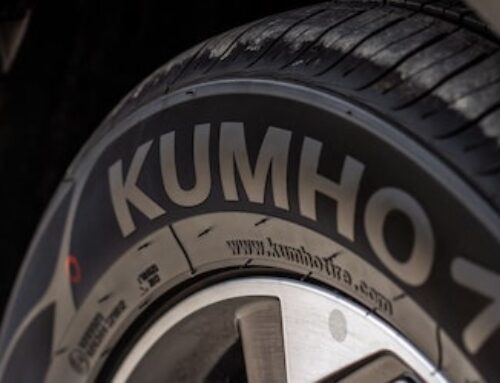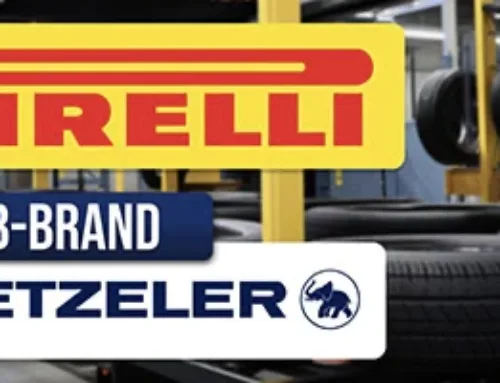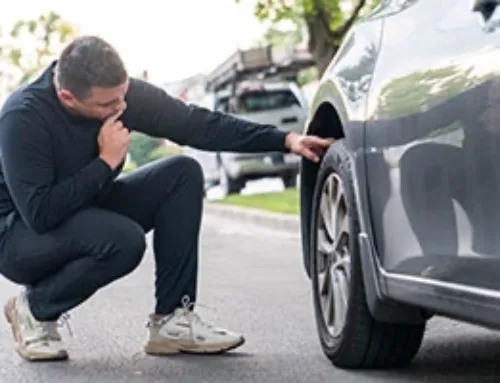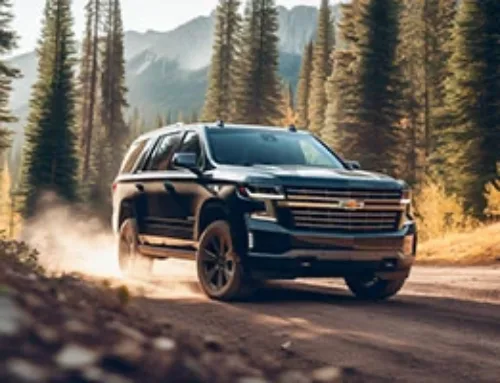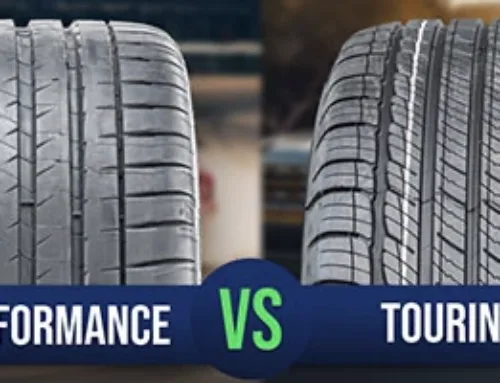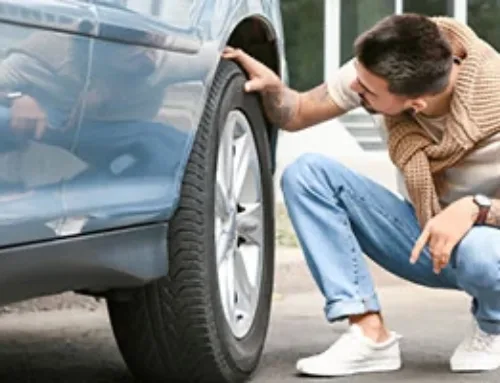Table of Contents
- What is tire pressure, and why is it important?
- What is dangerously low tire pressure?
- Can I still drive with low tire pressure?
- How will a tire pressure monitoring system (TPMS) help me?
- 4 major risks of driving with low-pressure tires
- What should I do if I have low tire pressure?
- Replacing your damaged tire
- Frequently Asked Questions
If your tire pressure is just below 30 psi, you can still drive on it for a few hours. But if you got a TPMS light on or the pressure is at 20 psi, filling the tire with air is an emergency. What happens if you don’t do it, or if the psi is too high, tells GoTire specialist Yens Svayder. Plus, he shares a few handy tips that every driver should know.
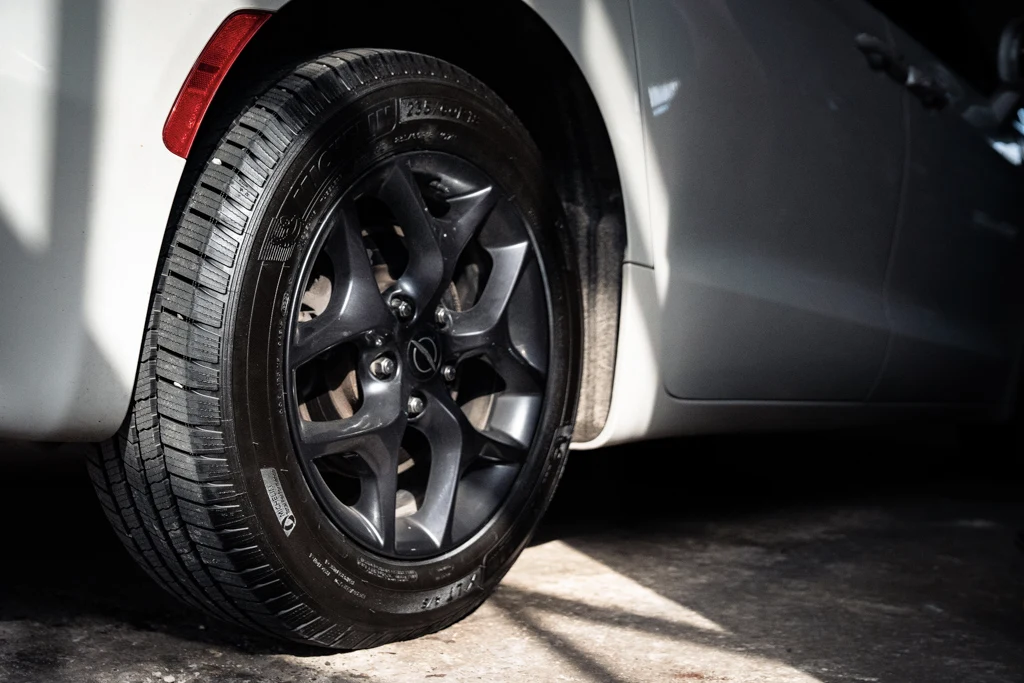
What is tire pressure, and why is it important?
Your tires connect you to the road and allow you to move smoothly over various surfaces. They are, arguably, one of the most critical parts of a car, and the air pressure inside them is very important. There are risks associated with having too much or too little air in your tires (too high or too low tire pressure), as it can affect many things, from fuel efficiency and handling to general safety.
Tire pressure is measured in pounds per square inch (psi), the weight of the air pressure inside your tire. You can check your tire pressure with a small portable tire pressure gauge at the air pumps at a gas station, or you may be notified if your pressure drops by your tire pressure monitoring system (TPMS).
When something goes wrong with our car, we usually go straight to our local mechanic to sort out the problem. But there are a few things that motorists need to know how to check, including the amount of windshield wiper fluid, the level of the engine oil and coolant, and the pressure of the tires. I know my dad showed me how to do all that when I got my first car!
What is dangerously low tire pressure?
So what is a dangerously low level of pressure for your tires, and what should you do about it? While the normal recommended tire pressure for most tires is between 32 and 35 psi, you can actually go as low as 20 psi before it’s considered a flat tire. Ideally, you’ve caught the low tire pressure before it gets to 20 psi and rectified it. We recommend you check your tire pressure regularly and add air when it gets to 28 psi or beforehand.

If your car has a tire pressure warning light, this is likely to come on when your pressure drops by about 25% (so 24 to 26 psi). While you can have lower tire pressure than this, it is still definitely low enough for you to need to fix the problem right away and re-fill your tires.
Don’t miss the best tire deals & tips!
Sign up for our newsletter
Can I still drive with low tire pressure?
As we mentioned, continuing driving is dangerous if your tire pressure drops too low. You must stay above about 30 psi for long distances. If your pressure goes much below 30 psi, you should only drive a short distance, below 10 miles, to refill the tire. If your pressure drops below 20 psi, you should try to avoid driving at all!
You’re safest staying above 30 psi, but if your pressure exceeds about 20 psi, you can only drive for short distances. If your TPMS warning light is on, we suggest getting someone out to repair and refill it for you. Just stop and patiently wait for help. If your tire pressure is below 20 psi, the fatal sidewall damage on a highway (higher speed than in the city) takes as long as the distance to the next stop. If we could restrict you from driving on dangerously low tire pressure, we would. Please never do it.
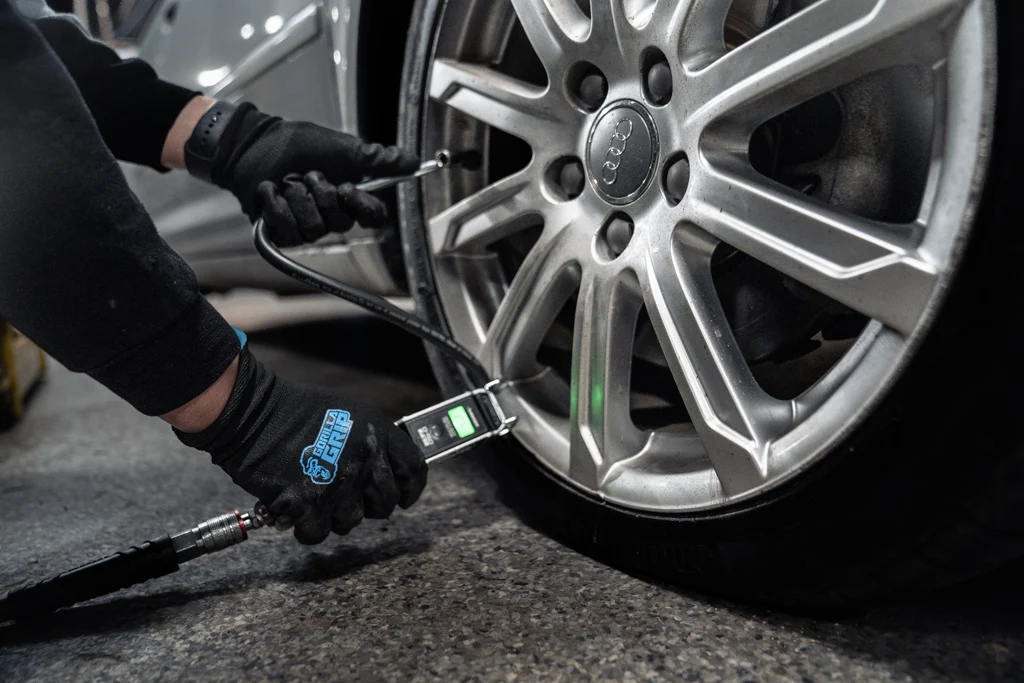
How will a tire pressure monitoring system (TPMS) help me?
Your TPMS monitors the air pressure in your car’s tires, and all cars manufactured since 2008 will have one. The TPMS will inform you when your tire pressure is too low, usually through a low-pressure light on the dashboard.
However, it’s important to know that your TPMS only alerts you to low tire pressure when it gets below 25% of the normal pressure, and ideally, you should fill your tires before they reach this point. So your TPMS light is only a final line of defense against flat tires — you should regularly check your car for low tire pressure and fill your tires before the TPMS light kicks in.
4 major risks of driving with low-pressure tires
If you drive with low tire pressure, there are various risks, from minor to severe. These include:
1. Tire damage
When you drive with low tire pressure, the tires begin to wear out unevenly. This uneven tire wear can reduce the lifespan of your tires and may mean that you have to replace them sooner than you would with the correct tire pressure, which can be costly.
2. Handling unpredictability
Your car will not grip the road as well with low tire pressure, and this can cause it to handle unpredictably. Steering may become less precise, and braking may be slower. If you have different tire pressures on either side of your car, this can also make the car skew to one side or the other.
3. Increased gas mileage
Did you know that low tire pressure can cost you money? You will get optimum fuel economy when your tire pressure is accurate. Your vehicle will need to work harder with underinflated tires, which will cost you more in gas in the long run.
4. Accidents
The most serious impact of low tire pressure is the potential for tire failure causing accidents. When you drive with low tire pressure, the sidewalls of your tires flex more, causing heat to build up in the tires. If you drive like this for extended periods of time, this can eventually lead to a tire blowout, which is extremely dangerous, especially on a highway.

What should I do if I have low tire pressure?
Here are a few simple steps you can take if you think you have low tire pressure:
- Use an air pressure gauge to check your tire pressure — you can use a portable one at home or go to your local gas station, tire store, or even some convenience stores.
- If your tire pressure is above 30 psi, you can choose to top it up to the recommended psi, but it’s not urgent.
- If your tire pressure is below 30 psi, you should top it up immediately, but you can drive on it for a few hours if it’s only just below 30 psi.
- If your TPMS light is on or your pressure is at 20 psi, we recommend getting someone to refill your tire. As a last resort, you can drive no more than 10 miles to fill the tire with air as soon as possible.
Replacing your damaged tire
If you’ve had a blowout or your tire had serious uneven wear, you’ll need to replace it immediately, as you shouldn’t drive on a spare tire for more than 50 miles. To find the best tires online, check out GoTire. Your new tires will be rapidly delivered to your door (or wherever your car is) free of charge with FedEx. Our 24/7/365 customer support team is on hand to answer any tire questions and ensure you get the best tire for your vehicle and driving style.
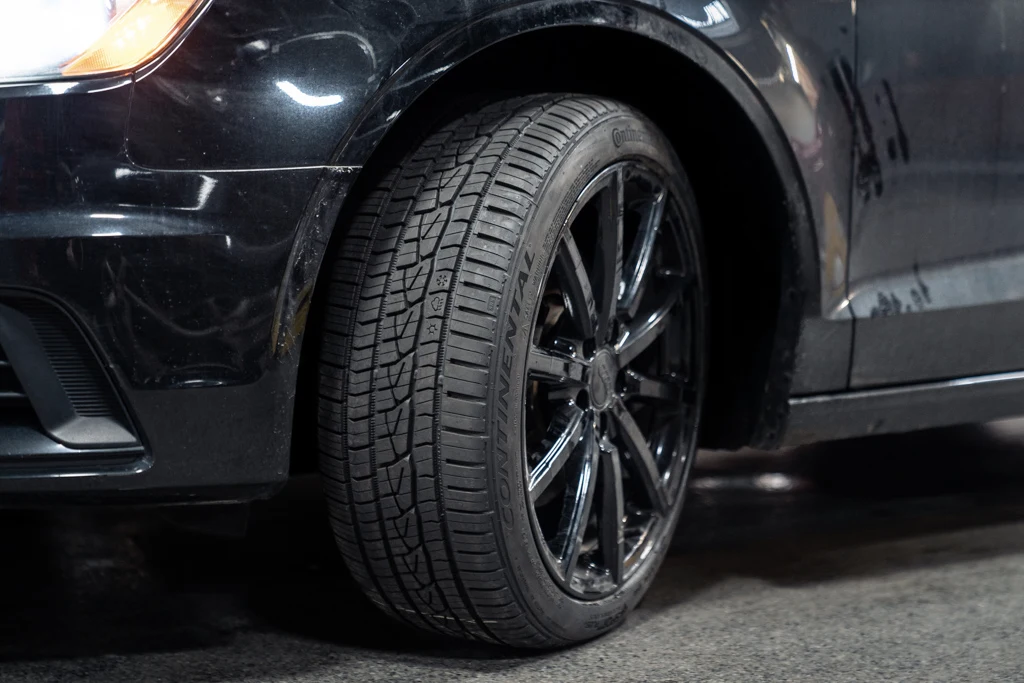
Frequently Asked Questions
Can I go a day with low tire pressure?
No. We don’t recommend going a whole day with low tire pressure, as it may cause problems with your driving and possibly even cause a tire to blow out. To ensure you’re driving safely, we advise you to check your tire pressure regularly, especially before long drives or when there are extreme temperatures, and as soon as you notice you have low tire pressure, we suggest you fill your tires.
Do tires lose pressure overnight?
Yes, tires can lose pressure overnight. This is largely dependent on the environment, especially temperature changes. As temperatures drop, the tire pressure will also drop — in fact, for every 10 degrees the temperature goes down, the pressure in your tires reduces by 1 pound. That’s why it’s important to check tire pressure regularly and top it up if necessary, especially at the start of winter.
Is low tire pressure light urgent?
Yes, a low tire pressure warning light is urgent, and it’s important to take care of it as soon as possible. Low tire pressure is a key factor in accelerating tire wear, decreases your car’s fuel economy, and can also cause uneven and rapid tire wear, as well as cause an uncomfortable and unsafe ride. It can even cause accidents! You should check the tire pressure and fill your tires to their recommended levels as soon as you can.


